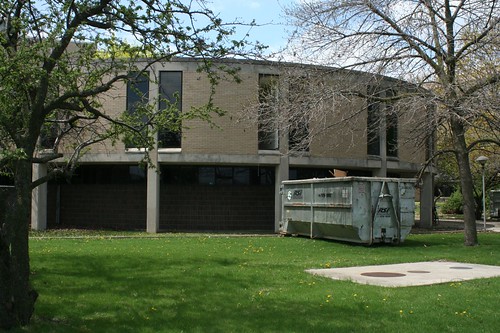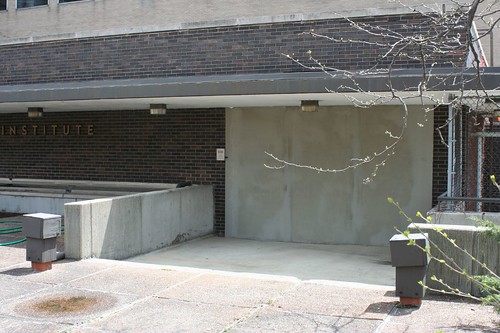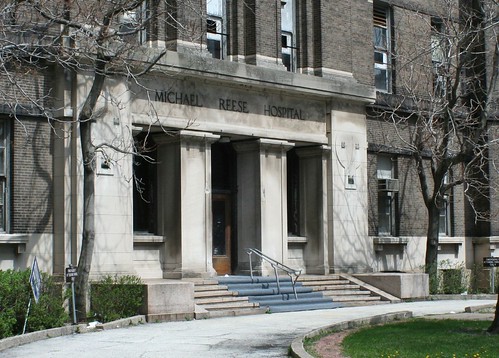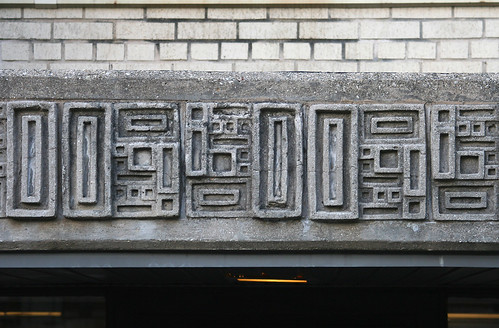
This example is used on the entry overhang of a four-plus-one apartment building on northern Ridge Avenue in Evanston, where its use vaguely evokes the image of an Aztec temple emerging from the jungle.
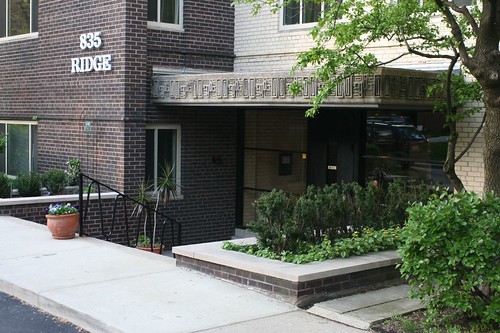
The same design is used on the stairwell decoration panel on a 3-flat on 55th Street near Midway Airport.
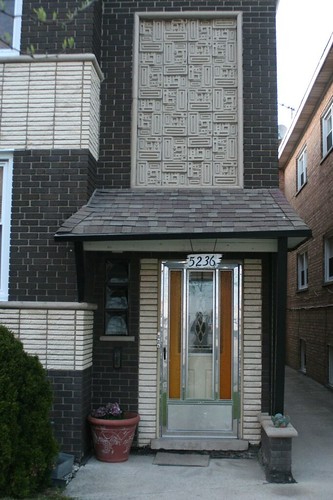
In both cases, rotating the block allows its complex patterns to overlap and interweave between blocks, erasing the distinction between the individual blocks and obscuring the fact that this is simply one design repeated over and over.
The design brought to mind a certain Rogers Park apartment building, and sure enough, one of the geometric forms on its wall is the very same block:
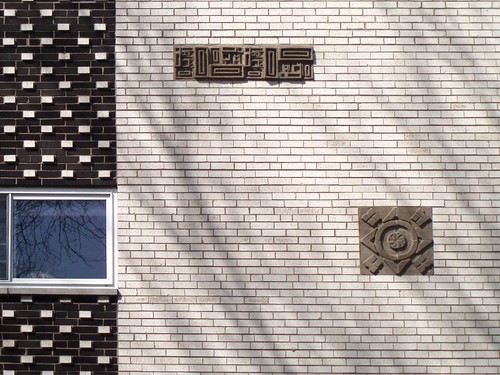
The recurrence of the blocks suggests that these were a product from a catalog, rather than the custom design I originally imagined. If so, were there other designs? Who manufactured them? Were they used by the same architect in all three cases? (N. S. Theodorou designed the Rogers Park building.)
The blocks certainly owe a heavy debt to the concrete textile blocks used by Frank Lloyd Wright in several of his California houses. Considering the 1950s fascination with the glamor and style of California living, the connection isn't too surprising.
